In today's world, where everyone's preferences are unique, mass customization has emerged as a game-changer across various industries. What is mass customization? At its core, mass customization definition encompasses a manufacturing approach that combines the flexibility and personalization of custom-made products with the low unit costs associated with mass production.
From fashion and furniture to software and healthcare, the ripple effect of mass customization is evident in its growing adoption. Companies are increasingly recognizing the value of tailoring products to individual customer preferences, seeing it not just as a market trend but as a strategic approach to customer satisfaction and loyalty. However, the transition from standardization to customization is not without its challenges.
Challenge 1: Balancing Cost and Customization
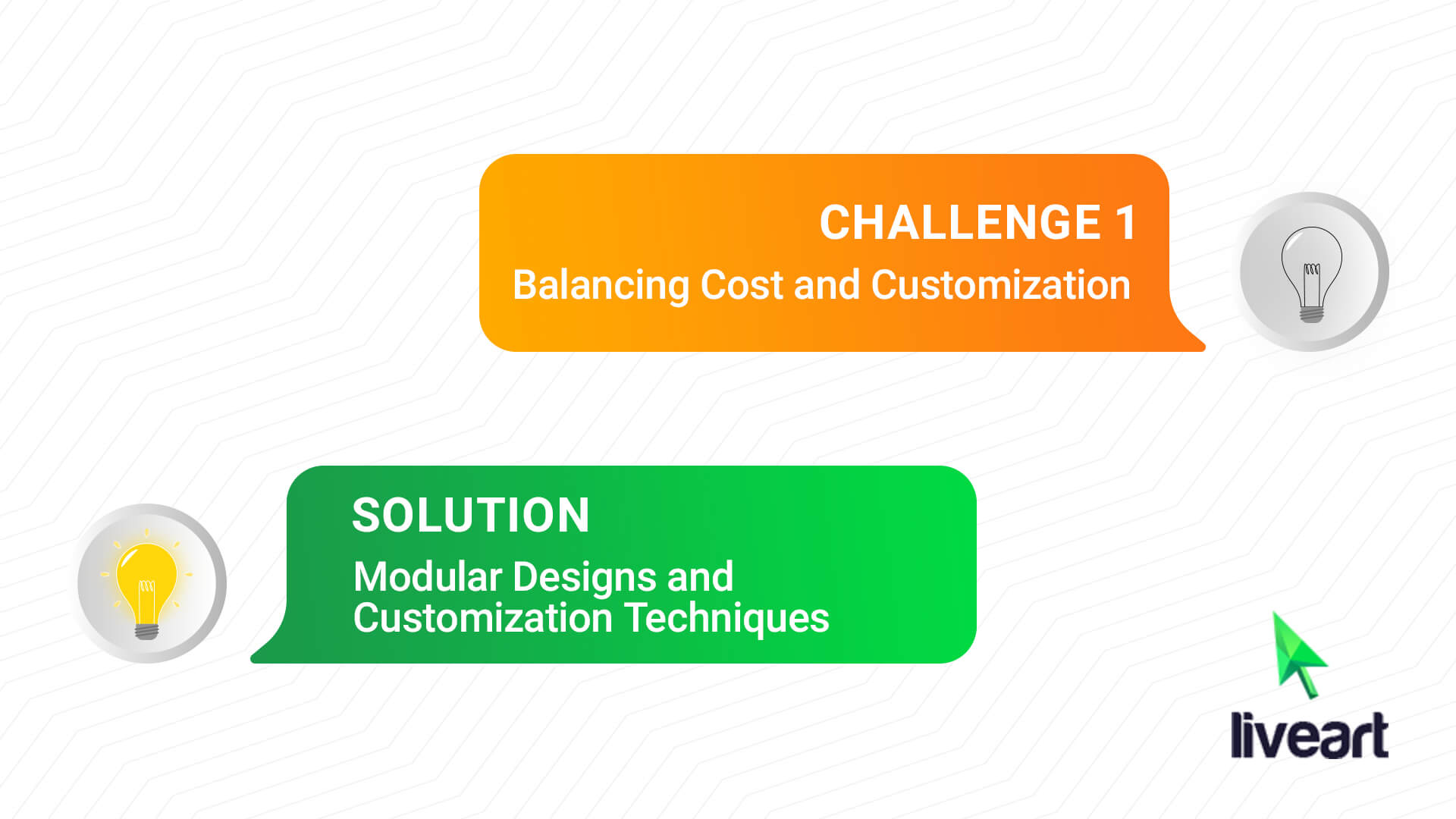
One of the most significant challenges in implementing mass customization lies in balancing the costs. As businesses strive to cater to individual preferences, the cost implications can be substantial. Customization, by its very nature, involves a departure from the uniformity and economies of scale inherent in mass production. This shift can lead to increased costs in design, manufacturing, and logistics.
For example, producing a wide variety of customized products often requires additional resources, more complex manufacturing processes, and potentially, a greater investment in time and labor. Additionally, managing a larger inventory of parts and materials to accommodate customization options can escalate operational costs.
Solution: Modular Designs and Cost-Efficient Customization Techniques
> To tackle this challenge, businesses can adopt modular designs. This approach involves creating products with interchangeable components that can be easily assembled or modified to meet specific customer needs.
Modular design allows for a high degree of customization while controlling production and inventory costs. It simplifies the manufacturing process as the same components can be used in multiple configurations, offering variety without the need for unique parts for each product.
> Another strategy is to employ cost-efficient customization techniques. Advances in technology, such as 3D printing and automated manufacturing processes, have opened new avenues for cost-effective customization.
These technologies reduce the need for manual labor and allow for quick and efficient production of customized parts. Using a just-in-time manufacturing method can also lower inventory costs by only making goods when they are needed. This is because there is no need to keep a lot of different parts.
Challenge 2: Maintaining Quality Control
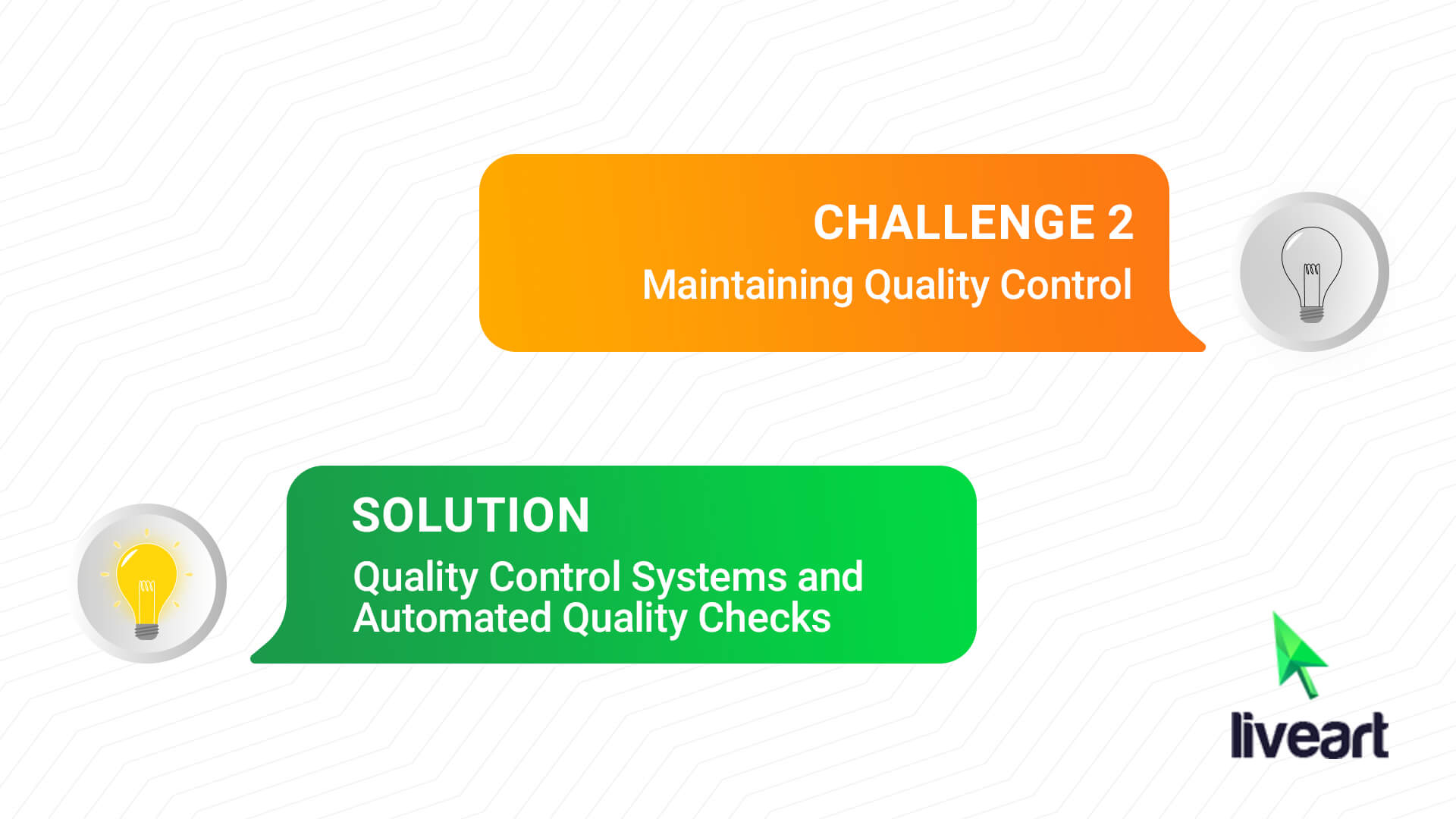
The very essence of mass customization - producing a wide variety of products tailored to individual tastes and requirements - makes quality control more complex. Each variation or customization introduces potential variables that can impact the final product's quality.
Unlike mass production, where uniformity allows for streamlined quality checks, customization demands a more tailored approach. This diversity in production can lead to inconsistencies, potentially affecting the brand's reputation and customer satisfaction.
Moreover, the challenge is not just in maintaining quality but also in doing so without significantly slowing down production or escalating costs. Traditional quality control methods may not be feasible or efficient for customized products, as they often require more time and resources for inspection and testing.
Solution: Robust Quality Control Systems and Automated Quality Checks
> To overcome these challenges, use strong quality control systems tailored for mass customization demands. This involves developing a flexible quality control process that can adapt to a variety of products while maintaining high standards. Utilizing advanced technology, such as automated quality checks, can play a pivotal role in this.
For instance, machine vision systems and AI-powered inspection tools can rapidly and accurately assess products, identifying defects or deviations from the desired specifications. These technologies offer the dual benefits of speed and precision, ensuring high-quality products without compromising the efficiency of the production process.
> Additionally, integrating quality control throughout the production process, rather than just at the final stage, can help in the early detection and correction of any issues. This proactive approach minimizes waste and reduces the time and cost associated with reworking or discarding defective products.
By embedding quality control into every step of the customization process, businesses can maintain high standards of quality, thereby enhancing customer trust and satisfaction.
Challenge 3: Complexity in Supply Chain Management
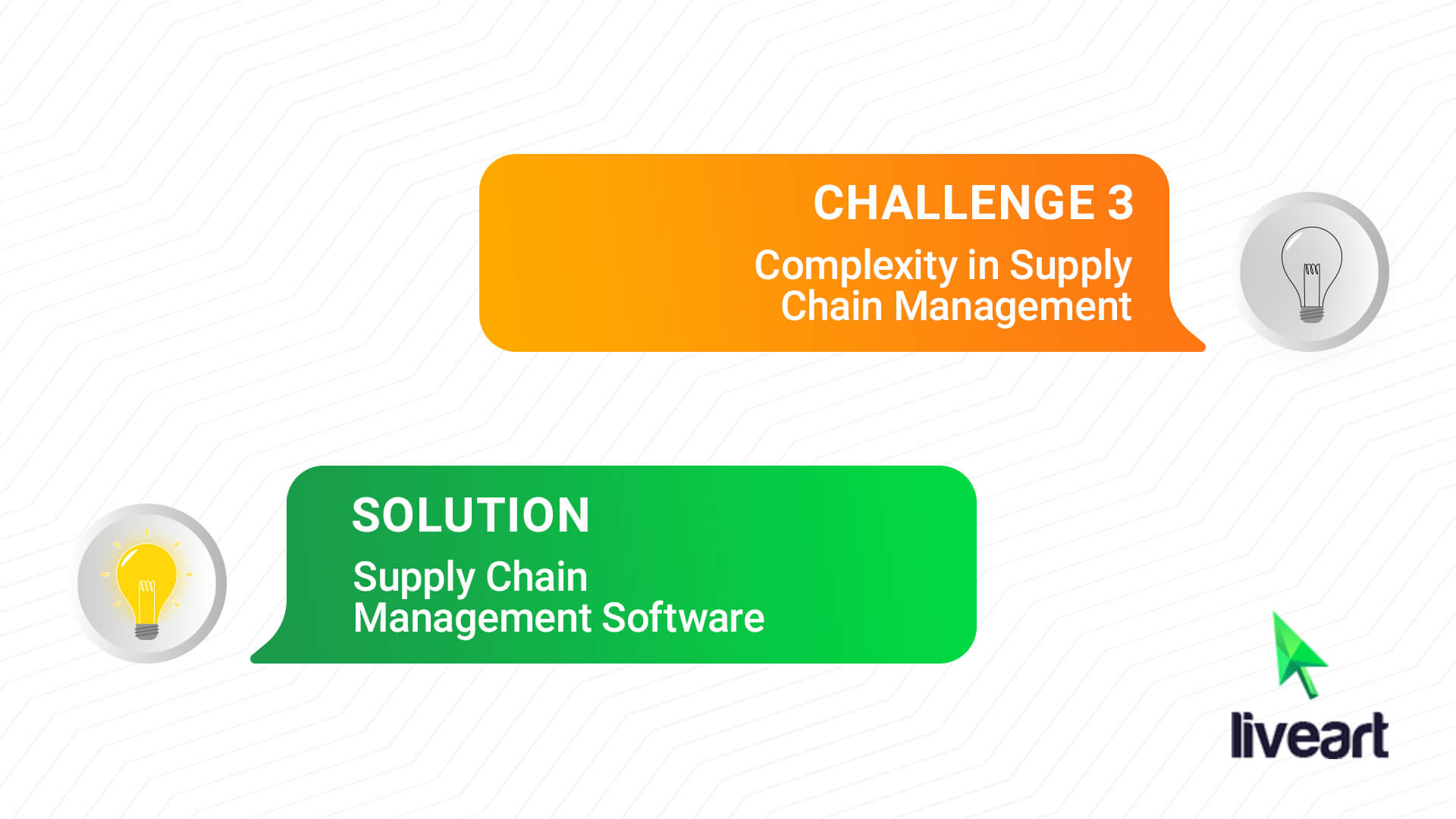
One of the most daunting aspects lies in sourcing materials for a wide array of diverse products. In a traditional supply chain, materials and components are typically standardized, making procurement and inventory management relatively straightforward.
However, with mass customization, businesses must source and manage a much broader variety of materials to cater to personalized products. This diversity can lead to challenges in maintaining efficient inventory levels, ensuring timely delivery of materials, and managing relationships with a larger pool of suppliers.
Moreover, the unpredictability in demand that comes with customized products adds another layer of complexity. Forecasting becomes more challenging when each customer might have unique preferences, leading to potential issues in overstocking or understocking materials.
Additionally, the need for rapid response to customer orders in mass customization means that any delay in the supply chain can result in slower production times and dissatisfied customers.
Solution: Advanced Supply Chain Management Software and Stronger Supplier Relationships
> To navigate these complexities, one effective solution is the implementation of advanced supply chain management (SCM) software. These systems are designed to handle the intricacies of managing diverse products and materials. They can offer real-time visibility into inventory levels, track supplier performance, and facilitate more accurate demand forecasting.
By integrating AI and machine learning algorithms, SCM software can predict trends, optimize inventory, and even automate ordering processes, ensuring that materials are available when needed without excessive overstocking.
> Building stronger relationships with suppliers is also crucial. Collaborative partnerships can lead to better communication, more reliable supply chains, and, often, more favorable terms. Working closely with suppliers can help in understanding and accommodating the unique demands of mass customization, from flexible ordering to quicker turnarounds.
Additionally, having a network of trusted suppliers can provide a buffer against disruptions, ensuring a more resilient supply chain.
Challenge 4: Technological Integration

Customization demands a level of flexibility and efficiency that traditional manufacturing processes and systems may not support. Businesses have to deal with a lot of customer information, manage complex production processes, and ensure seamless communication across various departments – all of which require robust technological backing.
The challenge lies not only in identifying and investing in the right technology but also in seamlessly integrating these technological solutions into existing systems and workflows.
Without the right technological infrastructure, businesses might struggle with inefficiencies, errors, and an inability to scale up their customization offerings. For instance, lacking efficient design software can slow down the process of translating customer preferences into viable product designs.
Similarly, inadequate data management systems can lead to poor customer experience and potential errors in customization.
Solution: Investing in the Right Technology
> Navigating this challenge requires a strategic approach to technology investment. Businesses should focus on technologies that offer scalability, flexibility, and integration capabilities. This might include investing in advanced Customer Relationship Management (CRM) systems to understand better and manage customer preferences, Enterprise Resource Planning (ERP) systems to integrate various business processes, and Computer-Aided Design (CAD) software for efficient product design.
Challenge 5: Customer Expectation Management

The challenge lies in the variability and elevation of these expectations. Customers anticipate not only a product that meets their specific needs but also exceptional service, timely delivery, and quality assurance. The difficulty is increased by the fact that a larger group of customers has different tastes, making it nearly impossible to please everyone while still running the business efficiently.
The stakes are high in this environment. A failure to meet these expectations can lead to customer dissatisfaction, negative reviews, and a tarnished brand reputation. Given the personalized nature of mass customization, customers often have higher expectations compared to standard off-the-shelf products.
This puts pressure on businesses to deliver exactly what has been promised, if not more.
Solution: Clear and Honest Communication
> Clear and honest communication is essential. This involves transparently conveying what can be offered, accurately describing customization options, and setting realistic timelines while keeping customers informed throughout the process. Technology plays a crucial role; utilizing tools like 3D previews or virtual try-ons can help set accurate expectations of the final product.
> Creating a loop for customer feedback is vital to understanding their experiences and refining the customization process accordingly. Training and empowering employees, especially those interacting with customers, ensures that they are capable of managing expectations and making decisions that enhance customer satisfaction.
Lastly, consistent quality assurance through stringent quality control measures guarantees that the final product meets the promised standards, thereby fulfilling customer expectations and maintaining a strong brand reputation.
Recommended reading: How to reduce eCommerce product returns.
Challenge 6: Inventory and Storage Issues
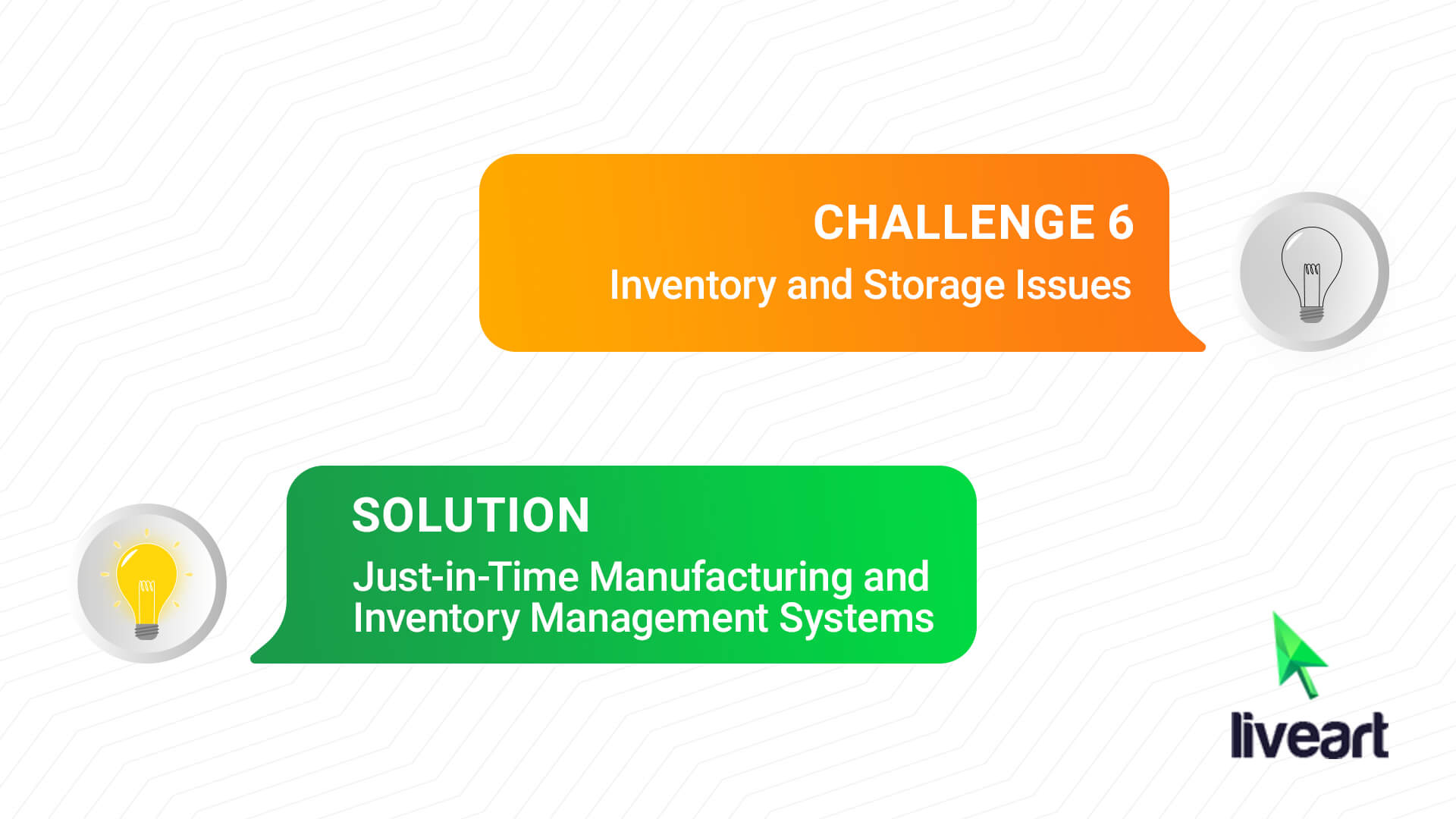
This complexity arises because mass customization demands keeping a variety of components to cater to individual customer preferences, unlike traditional manufacturing, which relies on uniformity and predictability. The storage of diverse parts requires more space, better organization, and more complex inventory management.
Additionally, there's a risk of overstocking certain components while facing shortages of others, leading to inefficiencies and increased costs. Monitoring such a varied inventory also demands more time and resources, making it challenging to maintain an optimal balance.
Solution: Just-in-Time Manufacturing and Efficient Inventory Management Systems
To tackle these inventory and storage issues, implementing just-in-time (JIT) manufacturing and efficient inventory management systems is crucial.
> Just-in-time manufacturing is a strategy that aligns raw-material orders from suppliers directly with production schedules. It aims to increase efficiency and decrease waste by receiving goods only as they are needed in the production process.
This approach significantly reduces the need for extensive storage space as materials are brought in only when necessary, minimizing the inventory of raw materials and components.
> In addition to JIT, an efficient inventory management system is essential. Such a system utilizes advanced software and technology to track inventory levels, orders, sales, and deliveries. It helps in forecasting demand accurately, ensuring that the right amount of inventory is available when needed.
This system can be integrated with suppliers for automatic reordering of components, further streamlining the process.
Challenge 7: Skilled Workforce Requirement
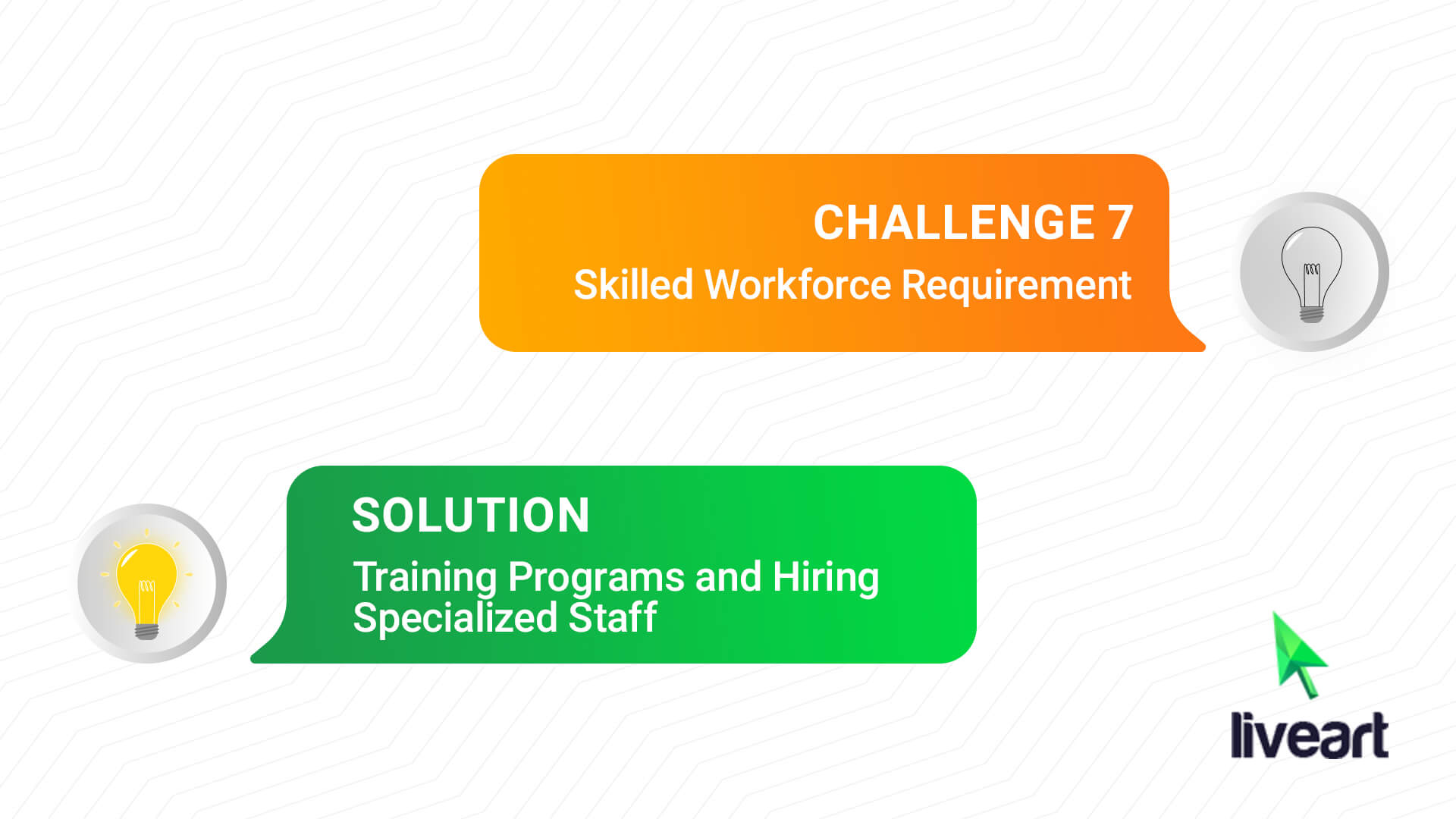
Workers must handle a broader range of activities, understand and operate advanced machinery, and adapt to varying customer demands. In addition, they are often required to engage in more problem-solving and decision-making processes as they deal with unique, customer-specific requirements regularly.
This complexity is not just limited to the manufacturing floor. It extends to areas like design, where personnel must be adept at using sophisticated design software to translate customer specifications into feasible product designs. Similarly, in logistics and supply chain management, employees need to be skilled in handling a more dynamic and responsive supply chain.
Solution: Continuous Training Programs and Hiring Specialized Staff
To address the challenge of requiring a skilled workforce, two key strategies can be employed: implementing continuous training programs and hiring specialized staff.
> Continuous training programs are essential to ensure that the existing workforce can keep up with the evolving demands of mass customization. These programs should focus on upskilling employees in areas such as operating new machinery, understanding advanced software, and enhancing problem-solving skills.
Regular training helps in maintaining a workforce that is adaptable, efficient, and capable of handling the intricacies of customized production.
> In addition to training existing staff, hiring specialized staff becomes equally important. This involves recruiting individuals with specific skill sets that are aligned with the unique requirements of mass customization.
For instance, hiring designers skilled in 3D modeling and customization software or logistics personnel experienced in handling complex supply chains can significantly boost the efficiency and effectiveness of the mass customization process.
Challenge 8: Environmental Concerns
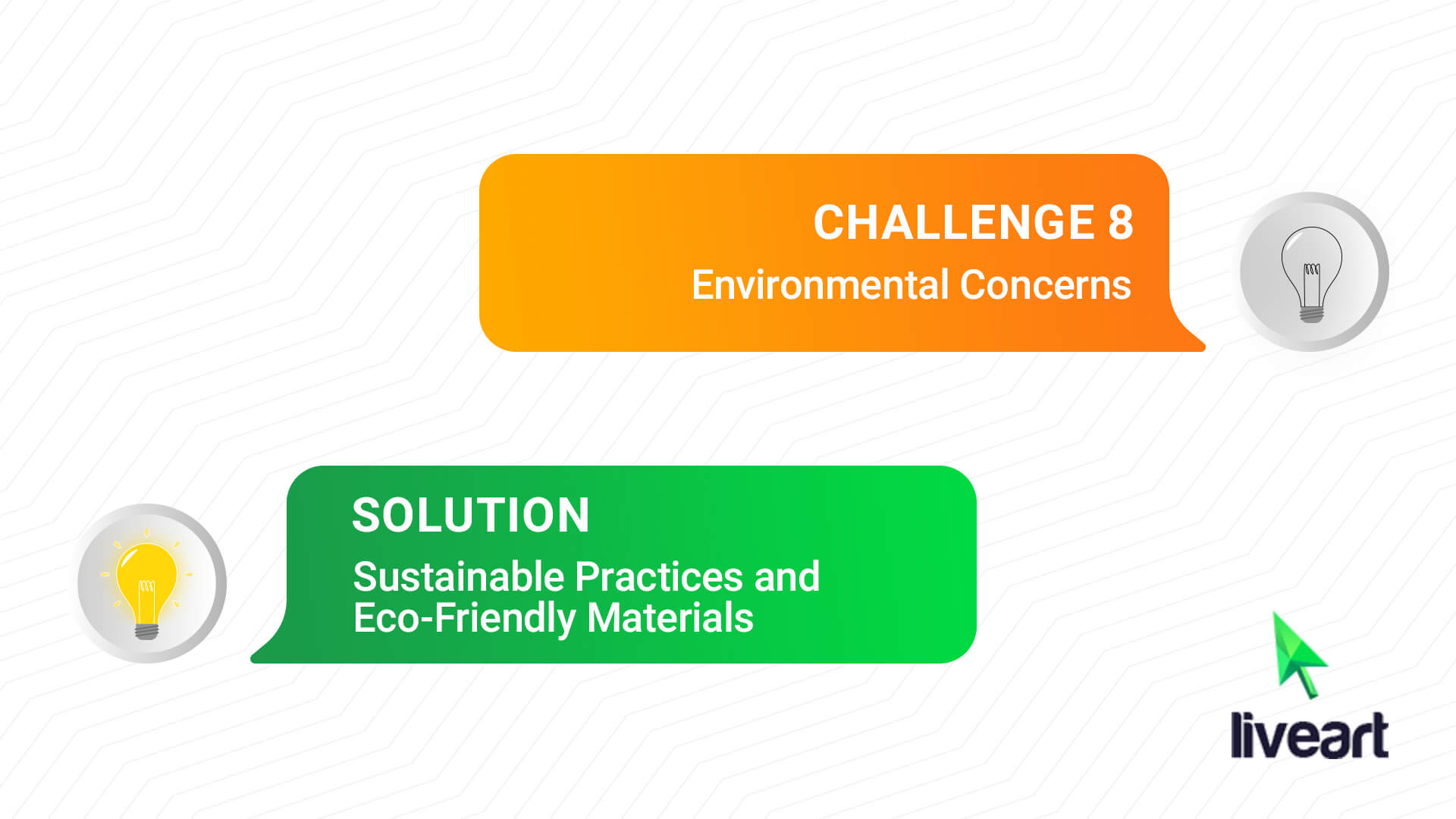
The production of a more diverse range of products poses significant environmental concerns. This diversity often leads to increased use and disposal of varied materials, potentially exacerbating waste generation. Additionally, manufacturing different products usually requires different production processes, which can increase energy consumption and greenhouse gas emissions.
The complexity of managing a more varied supply chain also poses challenges in terms of transportation and logistics, further contributing to the environmental footprint.
Another issue is the potential increase in resource consumption. Customized products may require unique materials or components that are less common, less recyclable, or more resource-intensive to produce. This can lead to greater extraction and consumption of raw materials, straining natural resources.
The environmental impact is also felt in the disposal phase, where customized products may be harder to recycle due to their unique materials or components, leading to increased landfill waste.
Solution: Sustainable Practices and Eco-Friendly Materials
To mitigate these environmental impacts, it's crucial to integrate sustainable practices and use eco-friendly materials in the mass customization process.
Sustainable Practices:
> Implementing efficient manufacturing processes to reduce waste and energy consumption. This includes optimizing production runs and leveraging technology to minimize resource usage.
> Adopting a circular economy approach where possible, focusing on product life cycle extension, reuse, and recycling.
> Enhancing supply chain sustainability by optimizing logistics to reduce transportation emissions and choosing suppliers with eco-friendly practices.
Use of Eco-Friendly Materials:
> Prioritizing the use of recycled or renewable materials in product manufacturing. These materials have a lower environmental impact as they reduce the need for new resource extraction.
> Considering the full lifecycle of materials used, focusing on materials that are more easily recyclable or biodegradable to minimize end-of-life environmental impact.
> Educating customers about the environmental benefits of these materials and encouraging them to make eco-conscious choices.
Challenge 9: Data Management and Customer Privacy
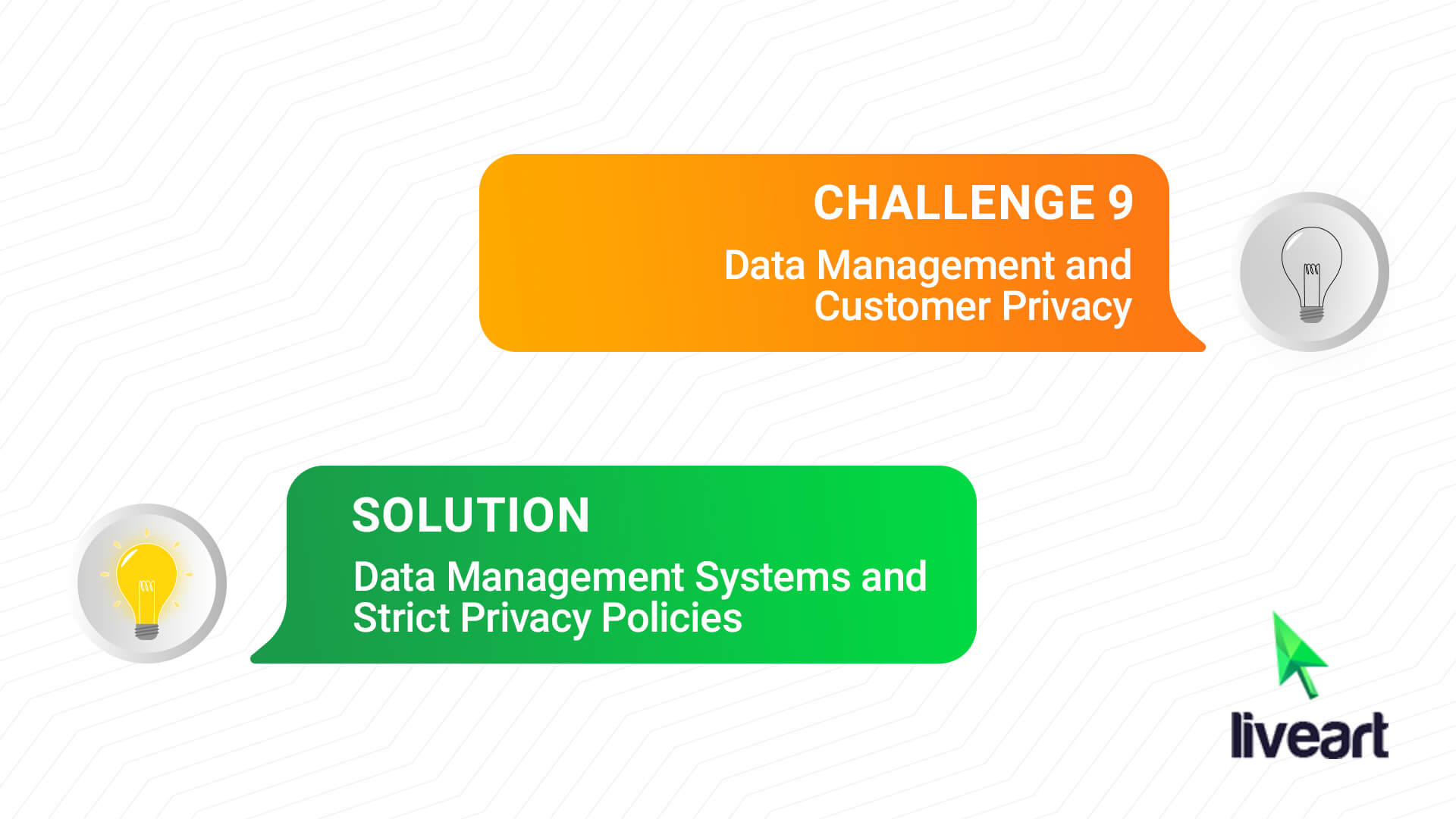
The very nature of customization requires collecting detailed personal information from customers, such as their preferences, sizes, and sometimes even biometric data. Managing this vast amount of sensitive data presents several challenges.
Firstly, there's the risk of data breaches and unauthorized access, which can lead to the exposure of personal customer information. Such incidents not only damage the company's reputation but also lead to legal ramifications.
Additionally, there is the challenge of ensuring data accuracy and updating it regularly, as outdated or incorrect data can result in unsatisfactory products and customer experiences.
Furthermore, companies must navigate the complexities of data privacy regulations, which vary significantly across regions and countries. Compliance with these regulations is crucial to avoid legal issues and maintain customer trust.
Solution: Robust Data Management Systems and Strict Privacy Policies
To effectively address these challenges, it's essential to have robust data management systems and strict privacy policies in place.
Robust Data Management Systems:
> Implementing advanced data management systems that ensure secure storage and handling of customer data. These systems should be equipped with strong encryption and cybersecurity measures to prevent breaches.
> Incorporating regular updates and maintenance protocols to ensure data accuracy and reliability.
> Utilizing cloud-based solutions with high security and scalability to manage large volumes of data efficiently.
Strict Privacy Policies:
> Developing and enforcing strict privacy policies that clearly define how customer data is collected, used, and protected. These policies should be transparent and easily accessible to customers.
> Ensuring compliance with all relevant data protection regulations like GDPR in Europe or CCPA in California. This includes obtaining proper consent for data collection and providing customers with control over their data.
> Regularly review and update privacy policies and practices to keep up with evolving regulations and technology.
Challenge 10: Implementing Product Customization on the Website
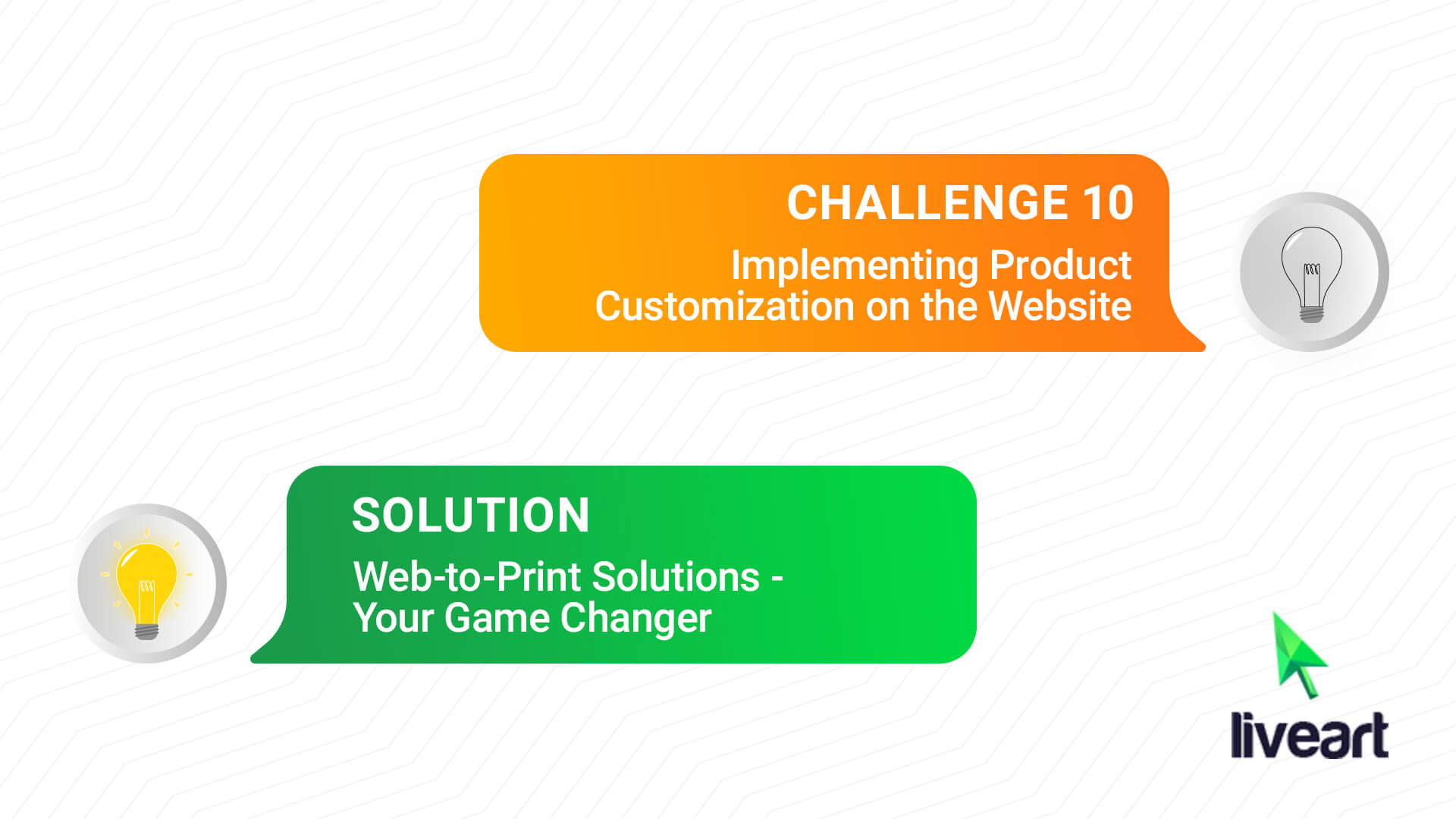
Does the one-size-fits-all approach of standard e-commerce solutions leave you struggling to meet unique customization demands? Perhaps the manual proofing process is consuming too much of your time, creating a bottleneck in your workflow. This might be leading to stunted growth in your business as you find yourself unable to scale up effectively.
You might also be experiencing a disconnect between what your customers want and what your designers deliver. This misalignment, coupled with inefficient order management processes, can result in errors and delays, frustrating both you and your clients.
Talking back and forth with customers and production sites all the time probably makes things harder and wastes time and energy. This might be one reason why you're losing customers: they leave when they have bad experiences or can't get what they want.
Solution: Web-to-Print Solutions - Your Game Changer
Web-to-print solutions offer customizable platforms that break free from the limitations of generic systems, allowing you to tailor your e-commerce website to meet your specific needs.
> Imagine automating much of the proofing process, saving time and reducing errors, thereby accelerating your production cycle.
> With these more efficient systems, your business is no longer shackled by operational inefficiencies, opening the doors to new growth opportunities.
> Web-to-print tools can also help bridge the gap between customer expectations and design outputs, ensuring that what your customers envision is accurately brought to life.
> Streamlining order management becomes simpler with advanced tools that reduce errors and improve overall efficiency. The reduction in the need for constant back-and-forth communication is another boon, as clearer instructions and visual previews for customers streamline the customization process.
By embracing web-to-print solutions, you're not just overcoming these challenges; you're opening up a world of opportunities for growth and enhanced customer satisfaction. This leap could revolutionize your approach to customization, leading to a more successful, rewarding business.
Conclusion
The journey towards successful mass customization is paved with a series of significant challenges, each requiring thoughtful solutions. Yet, it's essential to recognize that these challenges are not mere obstacles but opportunities for growth and innovation. Overcoming them is not just about ensuring the smooth operation of mass customization but also about building a business that is resilient, responsive to customer needs, and sustainable in the long term.
Businesses that embrace these challenges and invest in the suggested solutions will find themselves better equipped to meet the evolving demands of the market. They can turn these challenges into competitive advantages, setting themselves apart in the increasingly customized world of products and services.